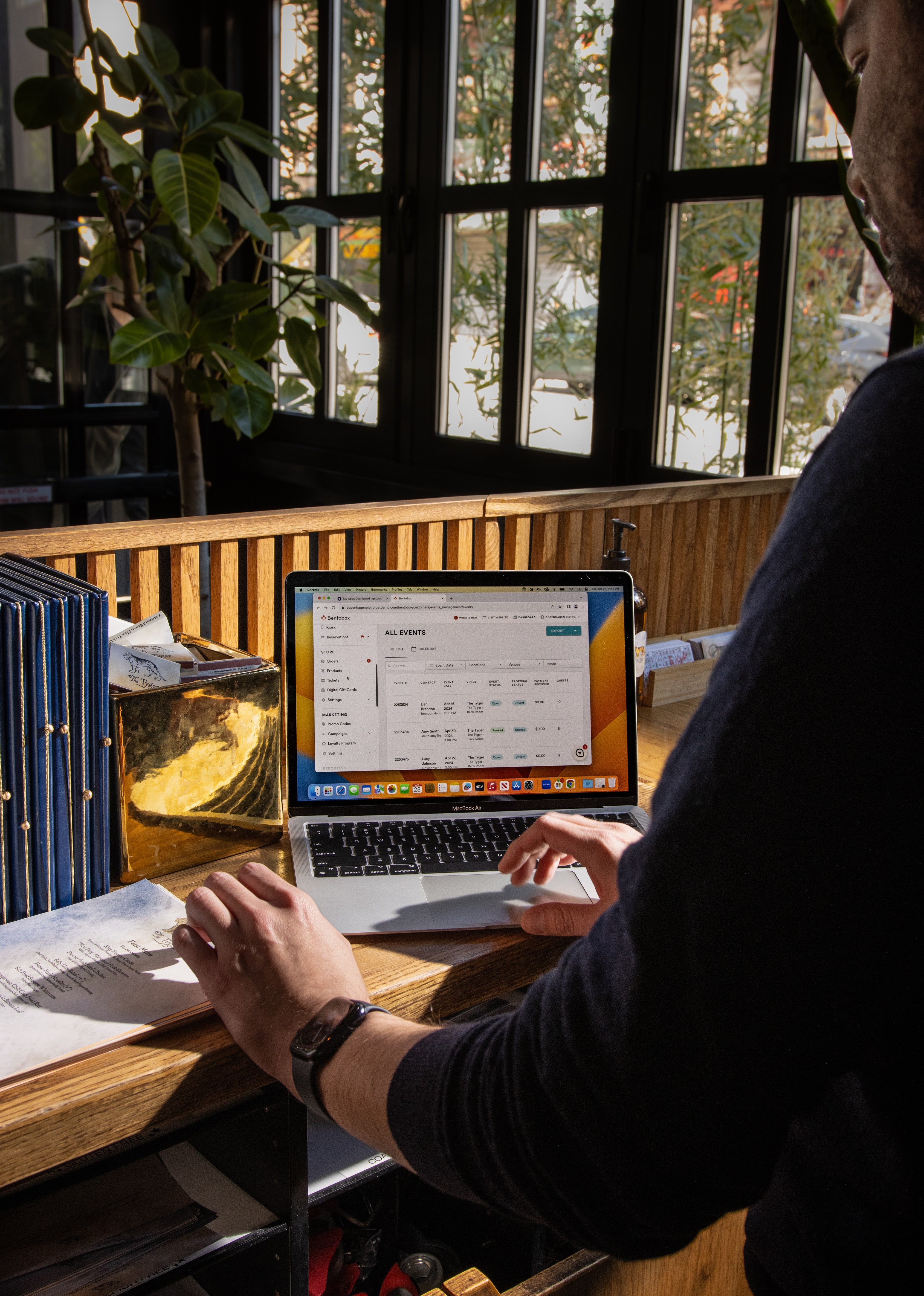Operations
How Restaurants Can Leverage Tech This Year
January 20, 2021
We surveyed 1,000 diners to help set restaurants up for success in 2021.
While 2020 was an unprecedented year for restaurants, 2021 is poised to see even greater adoption of technology to help restaurants to navigate a new year. Colder weather continues to threaten outdoor dining and surging COVID-19 cases continue to make indoor options scarce, but there is a light at the end of the tunnel. Vaccines are in distribution, a second stimulus bill arrived to give restaurants greater access to PPP funding, and with a new administration balancing power in Washington, the industry hopes to see greater relief soon.
However, as restaurants’ operations have changed, diner expectations have too. So to help restaurant owners get a clearer understanding of how to navigate this consequential and difficult new year, we surveyed a representative set of diners from across the nation to gain insight into diner behavior and expectations.
While the demand for online ordering and the use of restaurant websites as a digital storefront is not new, it is now critical to driving revenue. 38% of diners said that they plan to continue ordering online for pickup and delivery after the pandemic. This data shows the importance of online ordering going forward.

Online ordering has been vital for restaurants to drive revenue
But restaurants don’t only need to meet the demand for online ordering, they also need to keep in mind exactly how diners prefer to order online as well. 46% of surveyed diners said they prefer to order directly from a restaurant’s website over the use of a restaurant’s app (41%) and 42% prefer calling the restaurant directly over an online marketplace such as Grubhub or Seamless. For restaurants, this behavior proves the value of having an optimized website designed to convert more visitors into paying customers.
When placing a takeout or delivery order, 29% of surveyed diners said that they do not see an indication of the restaurant’s preferred order placement method (i.e. through a third party or directly from the restaurant). This suggests that direct online ordering is a preferred method for some diners to support their favorite restaurants.

Outdoor dining has been a lifeline for restaurants as the COVID-19 pandemic
has disrupted normal business operations
As local governments eased restrictions, permits and guidelines during the summer months, restaurants began spilling out into the streets with designated dining areas using properly implemented social distancing measures. But even with the additional real estate and the emergence of indoor dining at capped capacities, guests still had reservations about indoor and outdoor dining. When diners were polled on their feelings of restaurant reopenings during the pandemic, 49% of surveyed diners thought that both indoor and outdoor dining was appropriate, 39% felt comfortable with outdoor dining only, and 12% felt that neither indoor or outdoor dining was appropriate at all.

Diners and staff wear masks while indoors
But with this data in mind, there are many technologies restaurants can implement to support a safe restaurant experience while encouraging customers with reservations to continue to dine out.

Diners use contactless dining technology to safely dine indoors and outdoors
Contactless dining technology such as QR codes will continue to allow guests to view menus, order and pay using their mobile devices, therefore limiting the opportunity for COVID-19 transmission. Restaurants were quick to adopt this new technology: by Fall, 36% of diners reported using digital menus when dining out, while 43% of diners reported using contactless ordering technology. Alongside government guidelines and safety regulations, these technologies provided comfort and peace of mind to diners. When polled, 30% said they felt safe while dining out, 34% felt somewhat safe, and 15% reported not feeling safe.

Diners scan QR codes to view menus, order and pay from their mobile devices
Safety is top of mind for both restaurants and diners alike. Whether indoors or outdoors, seating appears to be a factor. 56% of diners cite table proximity as a serious concern when dining out and roughly 68% said that being seated too close to other guests was a red flag that would prevent them from dining again at that restaurant. With heightened safety measures, states have given the green light to charge diners with health and safety fees. Despite the added measures, diners aren’t quick to pay up. 61% say they’re not willing to pay for a 1-5% safety and health fee while dining out.
4 Important Takeaways from Diner Behavior and Technology Adoption
1. Online ordering is an essential tool for every restaurant
While online ordering has been a source of additional cash flow over the last few years, COVID-19 accelerated demand and therefore adoption. It has become a critical lifeline for restaurants during the pandemic and will continue to be an essential part of business operations in the future. With the digital transformation of restaurants, online ordering will be a large revenue source, and for many, their core revenue stream.
2. Diners will expect more safety precautions for on-premise dining
While many existing safety measures have taken place in restaurants, COVID-19 exposed the vulnerability of on-premise dining, particularly indoors, to the detriment of restaurants. It brought an emphasis on sanitation, cleaning procedures, staff health and ventilation within the restaurant space. Organizations like Safe Eats were founded to credit restaurants that excel in meeting standards and guidelines with the intention of bringing greater confidence to diners who may be wary about on-premise dining. Diners will continue to expect the measures that have been implemented in the restaurant industry going forward.
3. The adoption of outdoor dining will transform cities
Following restrictions and shutdowns of indoor dining in most states across the country, outdoor dining became one of the few remaining lifelines for restaurants. Overnight, major cities transformed with restaurants spilling out onto sidewalks and into streets cut off from traffic. Cities like New York saw a huge adoption in outdoor dining during the summer months with over 10,000 restaurants participating. To the fanfare of diners and operators alike, outdoor dining in this form will become a permanent fixture to the identity of cities going forward.
4. Contactless dining will streamline operations for certain concepts
For many restaurants, contactless dining technologies allowed for greater flexibility for staff while providing peace of mind for diners. Diners could scan QR codes to view menus, order and pay using their mobile devices, creating fewer touchpoints and contact with staff. For fast-casual businesses, this helps streamline operations and maximize revenue and will continue to be used as we move toward a post-pandemic world.
By understanding what diners expect going into a new year, restaurants can better prepare and build on their successes in 2021. And while spring and warmer weather aren’t far off, technologies like online ordering and contactless dining will remain crucial to seeing the COVID-19 pandemic through. But above all, the willingness to adapt, pivot and persevere is the biggest testament to the strength and resiliency of the restaurant community.

BentoBox Marketing & Commerce Platform
Deliver Smarter Hospitality
Want to stand out online, bring in more money, engage your diners, and streamline operations?
Recommended

Operations
How To Run a Profitable Restaurant
January 27, 2022
To run a profitable business, restaurants need to calculate their profit margin and know how to improve it.

Websites
No, Your Restaurant Doesn’t Need An App
July 10, 2024
Debunking a common myth about online ordering.

Operations
How The Great Margin Squeeze is Changing Restaurant Operations
September 6, 2024
Amid rising costs and turbulent demands, managing a restaurant as efficiently as possible has gone from a margin-booster to a life-saver.

